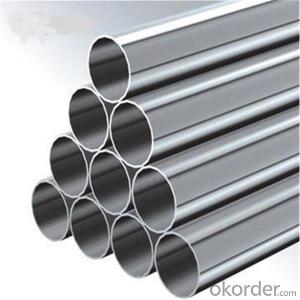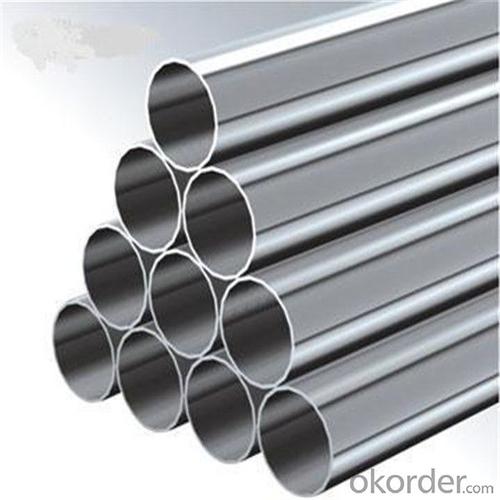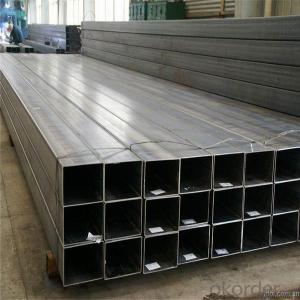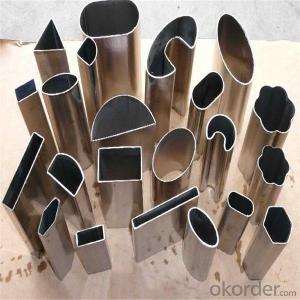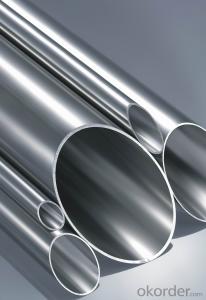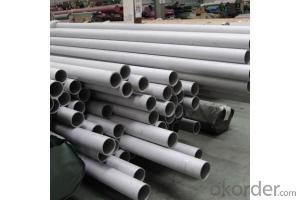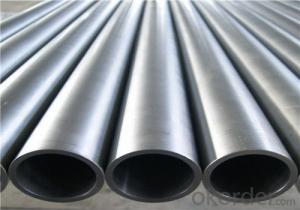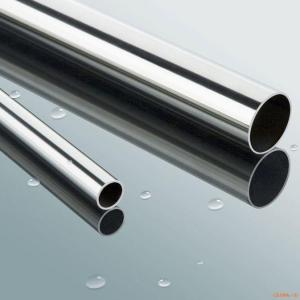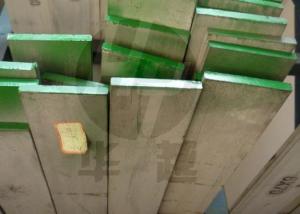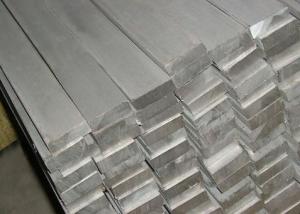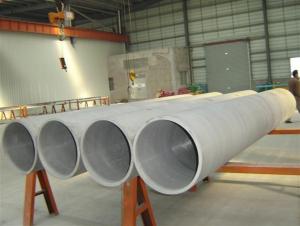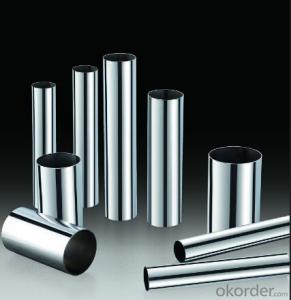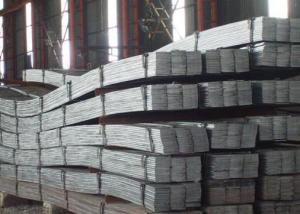TIG Welded 304 Stainless Steel Rectangular Tube/Pipe
- Loading Port:
- Shanghai
- Payment Terms:
- TT OR LC
- Min Order Qty:
- 5 m.t.
- Supply Capability:
- 25000 m.t./month
OKorder Service Pledge
OKorder Financial Service
You Might Also Like
Specification
eatures | 1.We are the coil agent in Foshan,offer coils to many other factories as the pipe material. |
2.We have more than 15 years experience in stainless steel market,a professional manufacturer. | |
3.We completely produce the pipes,from the material picking,rolling,striping,pipe making,polishing,and package all these procession. | |
Brand | ZaiHui |
Certification | ISO 9001:2008 |
ISO 14001:2004 | |
Standard | ASTM,AISI,JIS,DIN,EN,SUS,GB |
Type | Welded,TIG Welded |
Steel Grade | 201,202,301,304,316,430,304L,316L |
Surface Treatment | 180grit,240grit,320grit,400grit,500grit,600grit,HL,2B,Satin,Mirror.light,shiny,bright,brushed,mat |
Round pipe | |
Outer Diameter | 9.5,12.7,15.9,17,18,19.1,20,21,22,23,25.4,28,31.8,33,35,36,38.1,40,41.8,42,45,48,50,50.8,56,57,60,63.5,76.2,80,89,101.6,108,114,127, |
Thickness | 0.25mm to 3.0mm |
Length | 3000mm to 8000mm |
Square pipe | |
Side Length | 10*10,12*12,15*15,18*18,19*19,20*20,22*22,23*11,24*12,24*24,25*25,28*28,30*30,23*36,36*36,38*38,40*40,48*23,48*48,50*50, |
Thickness | 0.25mm to 3.0mm |
Length | 3000mm to 8000mm |
Tolerance | Thickness:+/-0.02mm; |
Length:+/-5mm | |
Quatity:+/-5% | |
Character | Rustproof, good corrosion resistance, anti-wearing, good-appearance, excellent mechanical properties. |
Application | Window,Door,Handrail,Curtain rail,Towel rail,Flagpole,Lamp pole,Sanitary Instrument,Billboard,Decoration,Upholstery, |
| Gade Chemical Composition | 201 | 202 | 301 | 304 | 316 | 430 | 304L | 316L |
| C | ≤0.08 | ≤0.06 | ≤0.06 | ≤0.06 | ≤0.08 | ≤0.12 | ≤0.03 | ≤0.03 |
| S | ≤0.02 | ≤0.02 | ≤0.03 | ≤0.03 | ≤0.03 | ≤0.03 | ≤0.03 | ≤0.03 |
| P | ≤0.075 | ≤0.06 | ≤0.045 | ≤0.035 | ≤0.045 | ≤0.04 | ≤0.045 | ≤0.045 |
| Mn | 8.5-10.5 | 7.5-10 | ≤2.0 | ≤2.0 | ≤2.0 | ≤1.0 | ≤2.0 | ≤2.0 |
| Si | ≤1.0 | ≤1.0 | ≤1.0 | ≤1.0 | ≤1.0 | ≤1.0 | ≤0.75 | ≤0.75 |
| Cr | 14-15 | 14-16 | 16-18 | 17-20 | 16-18 | 16-18 | 17-20 | 16-18 |
| Ni | 0.8-1.2 | 4-6 | 4-7 | 8-12 | 12-16 | ≤0.05 | 8-12 | 12-16 |
| Gade Physical Property | 201 | 202 | 301 | 304 | 316 | 430 | 304L | 316L |
| Density | 7.9 | 7.9 | 8 | 8 | 8 | 7.8 | 8 | 8 |
| The Conductivity | 16.3 | 16.3 | 16.3 | 16.3 | 14.2 | 26 | 16.3 | 16.3 |
| Specific Heat(0-100Cp) | 0.5 | 0.5 | 0.5 | 0.5 | 0.5 | 46 | 0.5 | 0.5 |
| Abrasion Resistance | Good | Good | Good | Good | Good | Good | Good | Good |
| Cold Forming | Fair | Good | Good | Good | Good | Good | Good | Good |
| Weldability | Good | Good | Excel | Excel | Excel | Fair | Excel | Excel |
| Melting Point | 1400-1420 | 1400-1420 | 1400-1420 | 1400-1450 | 1370-1400 | 1430-1510 | 1400-1450 | 1370-1400 |

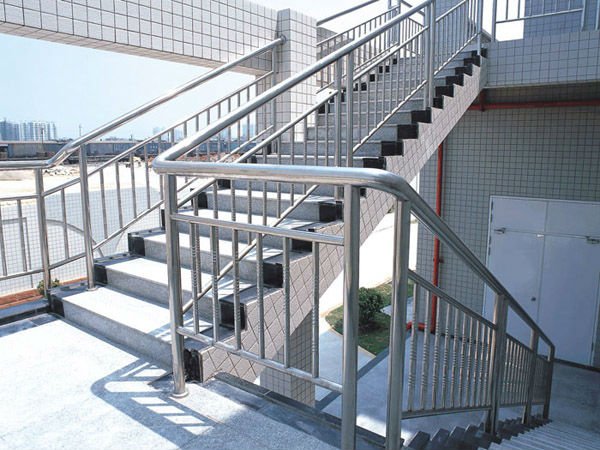
3. Applications
Milk and food industry, pharmaceutical industry, industries with special internal surface requirements.

4. Stainless steel conservation
Stainless steel is a popular metal for appliances these days. Many kitchen appliances, both large and small, are made with stainless steel. Pots and pans and eating utensils are also made with stainless steel. One advantage of stainless steel is that is very resistant to rusting. But it can get rust stains from transference of rusty objects. You can keep stainless steel rust-free by following a few simple steps.
Clean frequently with a cleaner and water. Any cleaner that is safe for glass is usually safe for stainless steel.
Scrub off all rust from these objects with a scrubbing pad or steel wood pad. This means getting rid of rust from pots and pans before putting them into a stainless steel sink or on top of a stainless steel stove.
Put a rubber mat at the bottom of the stainless steel sink before placing rusted pots and pans (such as cast iron cookware) in the sink.
Apply a thin layer of lubricant (such as mineral oil) to the surface of the stainless steel. This prevents rust from forming.
Inspect equipment frequently, if you notice discoloration, tarnish or water stains, increase the frequency of your fresh water rinses to reduce accumulated chemicals
- Q: Are stainless steel pipes resistant to corrosion?
- Yes, stainless steel pipes are highly resistant to corrosion. This is due to the presence of chromium in stainless steel, which forms a passive layer on the surface of the pipe. This passive layer acts as a protective barrier, preventing the metal underneath from coming into contact with corrosive substances. The chromium content in stainless steel is typically at least 10.5%, which is higher than other types of steel, and this helps to enhance its corrosion resistance. Stainless steel pipes are widely used in various industries such as construction, oil and gas, and automotive, where corrosion resistance is essential to ensure the longevity and integrity of the pipes.
- Q: Do stainless steel pipes require any special coatings?
- No, stainless steel pipes do not require any special coatings as they are already highly resistant to corrosion and do not need additional protection.
- Q: Stainless steel why rust?
- Stainless steel surface adhesion of organic juice (such as vegetables, soup, sputum), oxygen in the water under the circumstances, a long time, organic acid, organic acid on the surface of metal corrosion.
- Q: Can stainless steel pipes be used for fire protection systems?
- Indeed, fire protection systems can utilize stainless steel pipes. Due to its exceptional resistance to corrosion and ability to endure high temperatures, stainless steel is well-suited for fire protection purposes. Sprinkler systems, fire hydrants, and fire suppression systems frequently employ stainless steel pipes. These pipes boast durability and a prolonged lifespan, guaranteeing dependable performance within fire protection systems. Moreover, stainless steel pipes are non-combustible and do not propagate the spread of fire, rendering them an optimal selection for fire safety measures.
- Q: What is the cost difference between stainless steel and other types of pipes?
- The price variation between stainless steel pipes and other pipe types can differ based on several factors. Compared to PVC, copper, or galvanized steel, stainless steel pipes generally have a higher cost. This is mainly due to the exceptional qualities and characteristics that stainless steel provides. Stainless steel possesses a high resistance to corrosion, enabling it to withstand harsh environments and chemicals without deterioration. This durability results in an extended lifespan, reducing long-term maintenance and replacement expenses. Furthermore, stainless steel is renowned for its strength and ability to withstand high temperatures, making it suitable for a wide range of applications, including industrial and sanitary purposes. In contrast, other pipe types like PVC or copper are typically more affordable in terms of initial costs. However, they may have limitations regarding durability, chemical resistance, and temperature tolerance. For instance, PVC pipes may crack or break under extreme temperatures or exposure to specific chemicals. Although copper pipes are durable, they can be more expensive than PVC but still less costly than stainless steel. Therefore, when considering the price difference between stainless steel and other pipe types, it is crucial to consider the long-term benefits and potential cost savings associated with stainless steel's superior performance and longevity. Ultimately, the most cost-effective option for any given project or system will depend on the specific application, required qualities, and budget constraints.
- Q: Why is stainless steel magnetic?
- 304 stainless steel after cold processing, the structure of the structure will also change to martensite, and the greater the deformation degree of cold work, the more martensitic transformation, the greater the magnetic properties of steel. Like a lot of steel strips, the product is made up of 103 tubes, without obvious magnetic induction, producing 9.5 tubes. Due to the large deformation of the Ling bend, the magnetic sense is obvious, and the square tube produced by the utility model has larger deformation than the round tube, especially the folding part, the deformation is more intense, and the magnetism is more obvious. In order to completely eliminate the magnetic properties of the 304 steel caused by the above reasons, the stable austenite structure can be recovered by the solution treatment at high temperature so as to eliminate the magnetism. In particular, magnetic because it causes 304 stainless steel, and other materials such as stainless steel, carbon steel, magnetic 430 is not the same level, that is to say the magnetic steel 304 always showed a weak magnetic.
- Q: What are the factors to consider when selecting stainless steel pipes for a specific application?
- To ensure the right choice of stainless steel pipes for a specific application, several factors must be taken into consideration. 1. Corrosion Resistance: Stainless steel is widely known for its exceptional resistance to corrosion. However, it is important to assess the specific corrosive agents present in the application, such as chemicals, moisture, or high temperatures. By evaluating these agents, one can select a stainless steel grade that effectively withstands them. 2. Temperature and Pressure: Stainless steel pipes are used in various temperature and pressure conditions. The selected grade should possess the necessary strength and resistance to handle the specific levels required by the application. Higher temperatures might call for grades with increased heat resistance, while high-pressure environments may benefit from pipes with higher tensile strength. 3. Material Compatibility: In certain applications, stainless steel pipes come into contact with other materials or substances, such as liquids or gases. It is crucial to consider the compatibility of the stainless steel with these materials to avoid potential chemical reactions, contamination, or degradation. Conducting compatibility testing or seeking expert advice can help determine the best material choice. 4. Size and Dimensions: The size and dimensions of the stainless steel pipes must align with the application's requirements. This involves considering the diameter, thickness, and length of the pipes. Proper sizing guarantees optimal flow rates, structural integrity, and ease of installation. 5. Cost: Cost is an important factor in decision-making. Different stainless steel grades have varying prices, so it is necessary to strike a balance between desired properties and the allocated budget. While cost should not be the sole determining factor, it is important to find a stainless steel pipe that meets specifications without exceeding the budget. 6. Standards and Certifications: Depending on the application, specific standards and certifications, such as ASTM, ASME, or ISO, may be required. These standards ensure that the stainless steel pipes meet quality and performance criteria. It is crucial to select pipes that comply with the necessary standards and possess appropriate certifications to ensure reliability and safety. 7. Maintenance and Durability: Consider the maintenance requirements and expected lifespan of the stainless steel pipes. Some applications may require regular cleaning, inspection, or maintenance, while others may need pipes with long-term durability and resistance to wear and tear. By carefully evaluating these factors, one can make an informed decision when selecting stainless steel pipes for a specific application. This ensures that the chosen pipes meet the necessary performance, quality, and safety requirements.
- Q: How do you calculate the required wall thickness of stainless steel pipes?
- In order to determine the necessary wall thickness of stainless steel pipes, it is essential to take into account several factors. The initial consideration is the internal pressure that the pipe will be subjected to. This pressure is typically expressed in pounds per square inch (psi) or bar. The formula for calculating the required wall thickness due to internal pressure is as follows: t = (P * r) / (2 * S - 1.2 * P) Here, t represents the required wall thickness, P represents the internal pressure, r represents the pipe radius, and S represents the allowable stress of the material. The second factor to consider is the external pressure that the pipe will encounter. External pressure is typically caused by elements such as soil or fluid pressure. The formula for calculating the required wall thickness due to external pressure is as follows: t = (P * r) / (2 * S + 1.2 * P) The third factor to take into account is the maximum allowable deflection of the pipe. This is crucial to ensure that the pipe does not deform or fail under specific loads. The formula for calculating the required wall thickness due to deflection is as follows: t = (0.0625 * (w * L^3)) / (E * I) In this formula, t represents the required wall thickness, w represents the uniform load on the pipe per unit length, L represents the effective length of the pipe, E represents the elastic modulus of the material, and I represents the moment of inertia of the pipe cross-section. Moreover, it is important to consider the material's yield strength when determining the required wall thickness. The yield strength indicates the maximum stress that the material can endure before experiencing permanent deformation. It is crucial to select a material and wall thickness that can withstand the anticipated loads and pressures while maintaining safety and reliability. For more accurate calculations, it is advisable to refer to relevant design codes, standards, or engineering handbooks that are specific to stainless steel pipes. It is highly recommended to seek professional advice from a qualified engineer or structural designer to ensure the accuracy and safety of the design.
- Q: What is the lifespan of stainless steel pipes?
- The lifespan of stainless steel pipes can vary depending on various factors such as the grade of stainless steel used, the environment in which they are installed, and the maintenance and care they receive. However, in general, stainless steel pipes have a long lifespan compared to other materials commonly used for piping systems. Stainless steel pipes are known for their durability and corrosion-resistant properties. They are designed to withstand harsh conditions, high temperatures, and various corrosive substances, making them suitable for a wide range of applications. This inherent resistance to corrosion allows stainless steel pipes to have a longer lifespan than pipes made from materials like carbon steel or plastic. In ideal conditions and proper maintenance, stainless steel pipes can last for several decades or even longer. In some cases, stainless steel pipes have been known to last for over 100 years. However, it is important to note that the actual lifespan can vary depending on the specific application and the level of care provided. Regular inspection, maintenance, and cleaning can help extend the lifespan of stainless steel pipes. This includes removing any deposits or buildup that may occur over time, as well as addressing any signs of corrosion or damage promptly. Additionally, choosing the appropriate grade of stainless steel for the intended application can also contribute to a longer lifespan. Overall, stainless steel pipes are known for their durability and longevity. With proper care and maintenance, they can provide reliable and efficient performance for many years, making them a popular choice in various industries and applications.
- Q: How do you prevent pitting corrosion in stainless steel pipes?
- To prevent pitting corrosion in stainless steel pipes, several measures can be taken: 1. Choose the right grade of stainless steel: Not all stainless steels are created equal. Opt for grades with a higher resistance to corrosion, such as 316 or 904L, which contain molybdenum and have better resistance to pitting corrosion. 2. Adequate alloying elements: Ensure that the stainless steel pipe contains the proper amount of alloying elements, such as chromium and molybdenum. These elements form a protective layer on the surface of the steel, making it more resistant to corrosion. 3. Regular cleaning and maintenance: Regularly clean the stainless steel pipes to remove any contaminants or deposits that could lead to pitting corrosion. Avoid using abrasive materials or cleaners that may damage the protective layer of the steel. 4. Avoid exposure to aggressive environments: Limit the exposure of stainless steel pipes to aggressive substances like chloride ions, acidic solutions, or high temperatures, as these can accelerate pitting corrosion. If exposure is unavoidable, consider using protective coatings or linings to create a barrier between the steel and the corrosive environment. 5. Cathodic protection: Implement cathodic protection techniques, such as sacrificial anode systems or impressed current systems, to protect stainless steel pipes. These methods create a potential difference between the stainless steel and a more easily corroded metal, redirecting corrosion away from the stainless steel. 6. Control water chemistry: In applications involving water, monitor and control the water chemistry parameters such as pH, temperature, and chloride levels. Adjusting these factors within acceptable limits can help prevent pitting corrosion in stainless steel pipes. 7. Implement proper design and installation practices: Ensure that stainless steel pipes are designed and installed correctly, considering factors such as avoiding crevices, proper drainage, and avoiding stagnant areas where corrosion can occur. Proper insulation and the use of gaskets or flanges made from compatible materials can also prevent pitting corrosion. By following these preventive measures, you can significantly reduce the risk of pitting corrosion in stainless steel pipes, extending their lifespan and maintaining their structural integrity.
Send your message to us
TIG Welded 304 Stainless Steel Rectangular Tube/Pipe
- Loading Port:
- Shanghai
- Payment Terms:
- TT OR LC
- Min Order Qty:
- 5 m.t.
- Supply Capability:
- 25000 m.t./month
OKorder Service Pledge
OKorder Financial Service
Similar products
Hot products
Hot Searches
Related keywords
